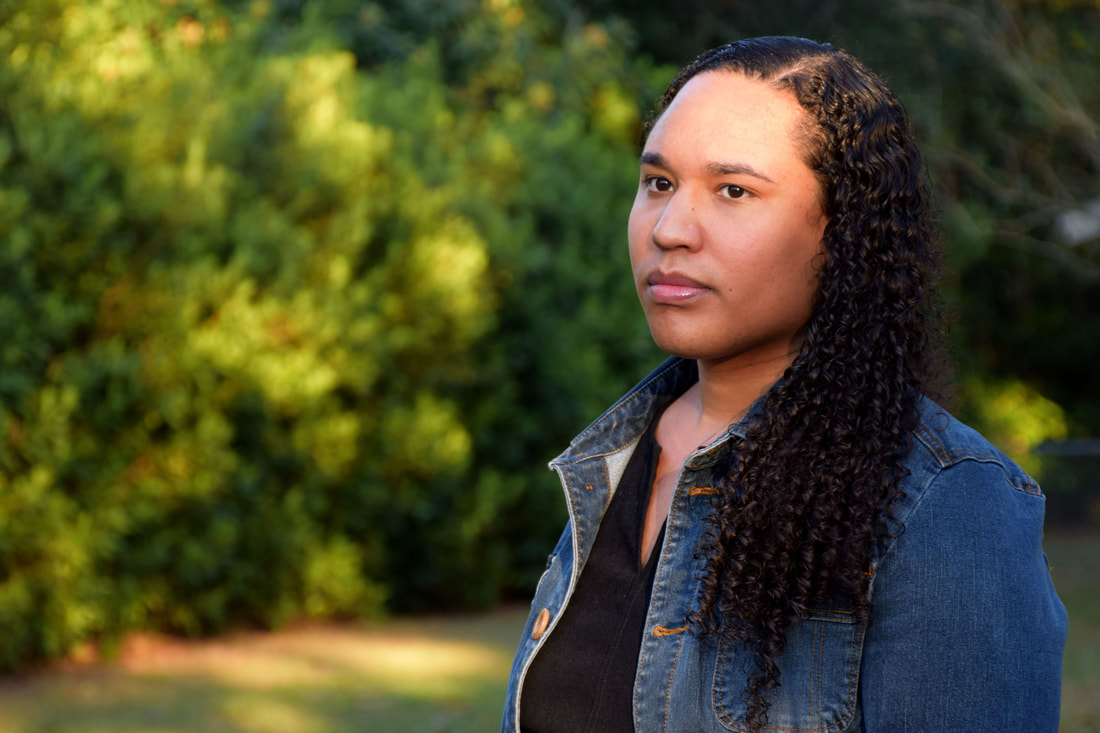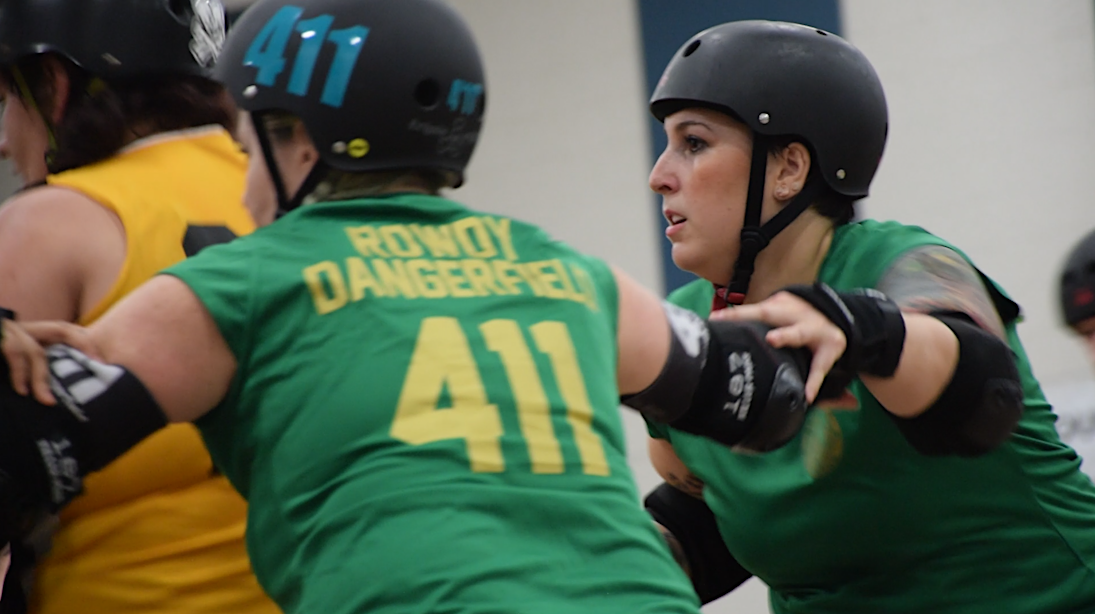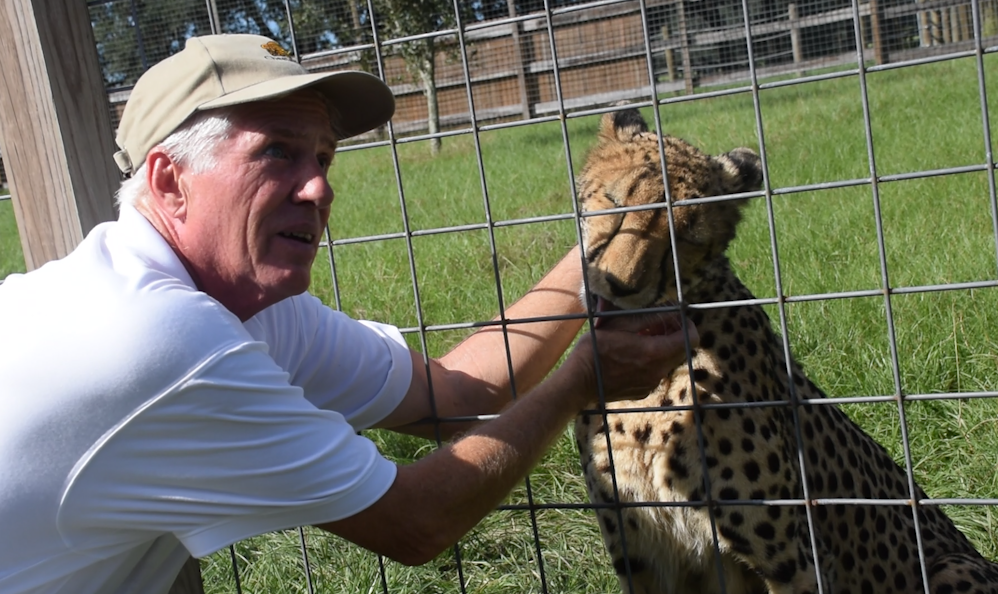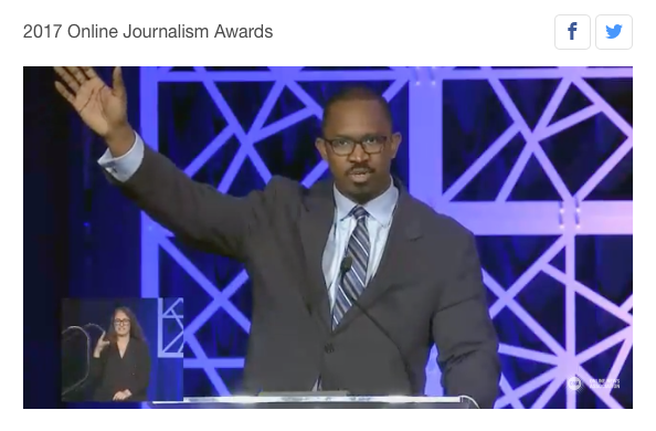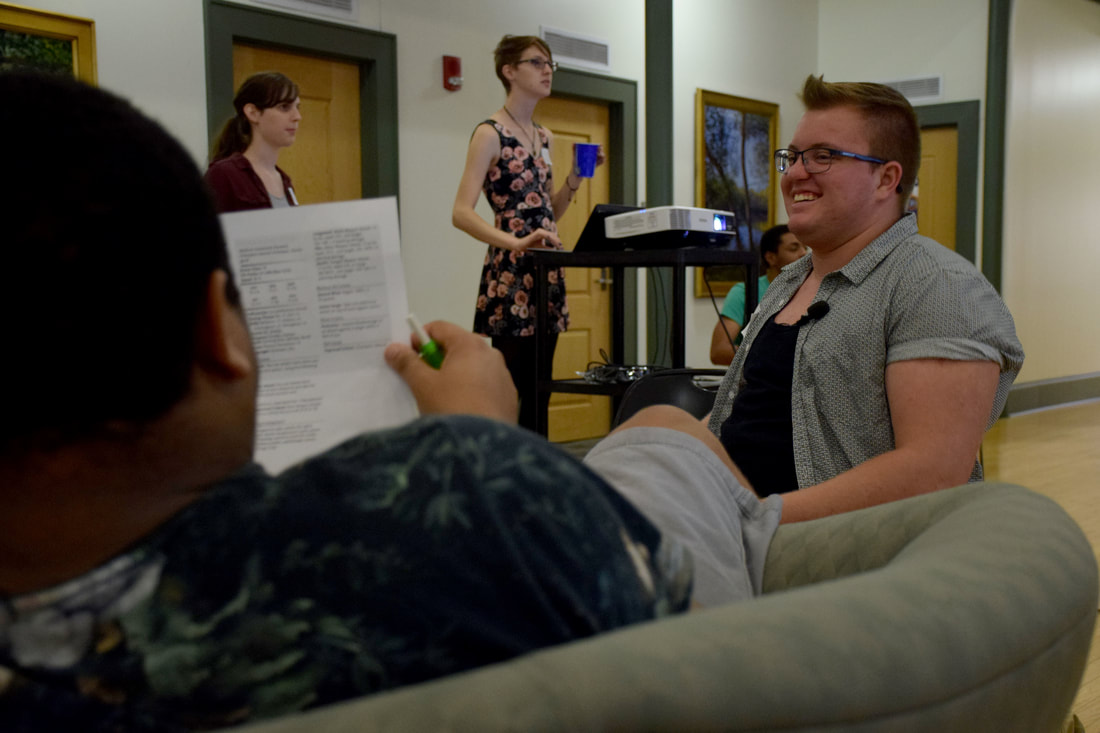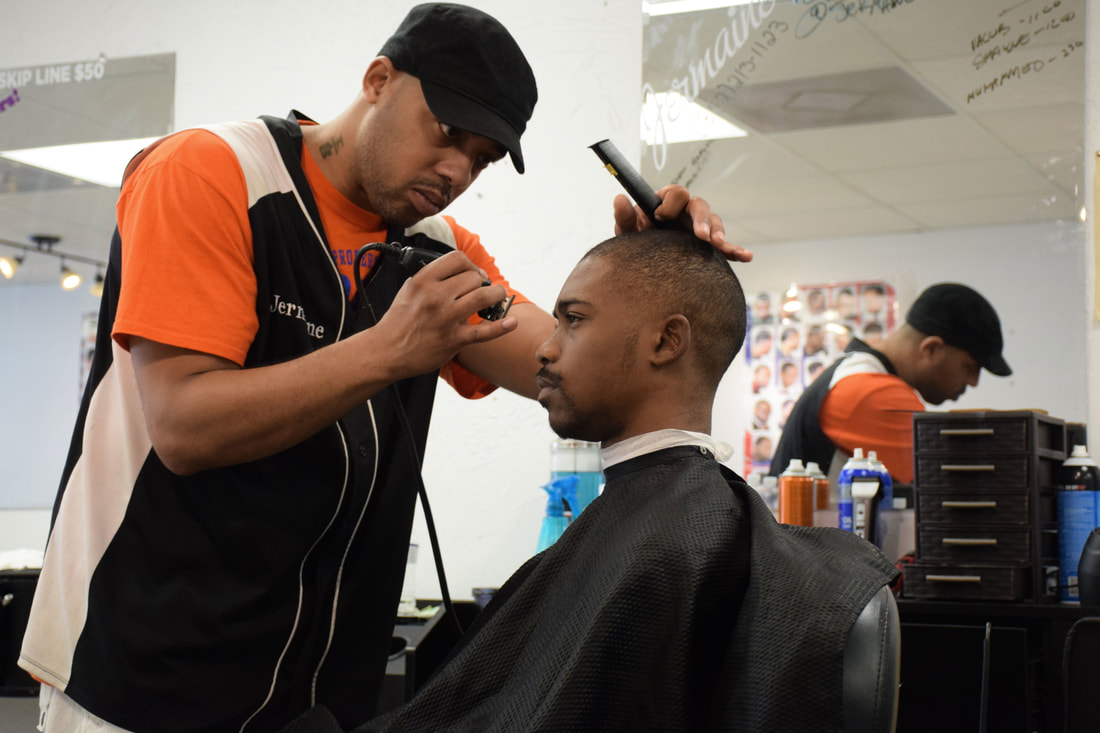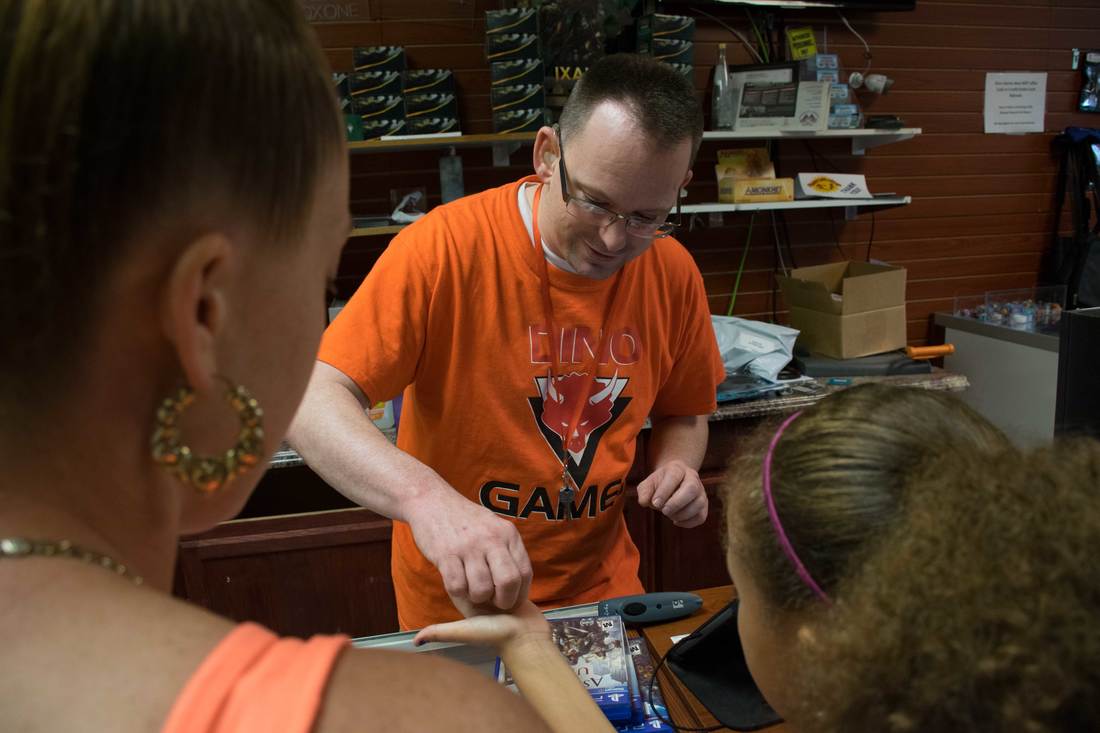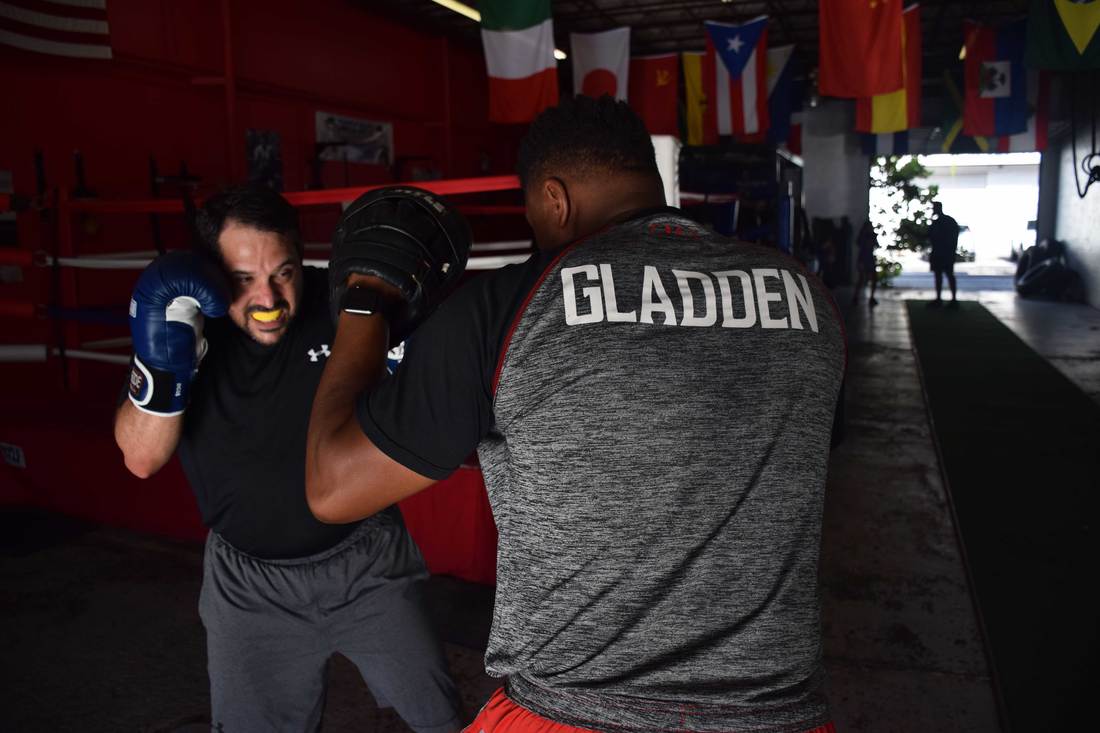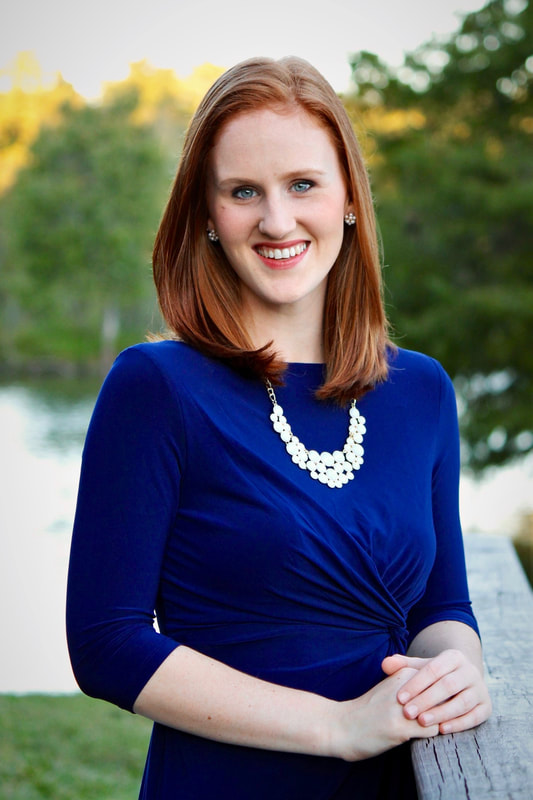|
When we decided on discrimination as the topic for our collective project, I wasn't sure how it was going to work. I wanted to find a unique story that could build a really impactful collective piece. So I thought about intersectionality. Not very often do we hear about marginalized communities discriminating against their own members for their differences, yet it is very common. Ellie Gaustria, 23, is a student at Santa Fe College. She is black and indigenous, bisexual and transgender. She has experienced discrimination in the form of transphobia, homophobia, bisexual erasure, racism, sexism and so much more simply for being who she is. All her life she's stood in a deadly intersection. I decided this project would be executed best as a photo essay and audio story, so I could really focus on her and what she had to say. During our interview, she explained intense moments of fear, anger, and joy, all of which she's experienced in relation to her many identities. I took photos of her at home, getting ready to go out to dinner, at the restaurant, and at her friend's home where she hung out for game night. By doing all this, I learned the importance of being able to "break bread" with your subject (as Professor Gary Green would say). I was able to get much more raw photos by spending more time with her, eating dinner and playing games with her. This also made it easier when it came time to get photos and audio of her at Gainesville's Transgender Day of Remembrance event. Again I followed her home, followed her on the bus there, and stuck by her side the entire night. Despite having to manage taking photos in almost complete darkness, it was such a sobering experience. She really allowed me to get up close and personal. I was able to record her speech, along with more than 17 minutes-worth of names of murdered transgender people who were murdered around the world in the past year. I captured people deep in thought as those names were read aloud. Then, when I edited all the photos and pieced all the sound together, I tried to recreate those moments for the listener. Although this story comes out of a topic I wish I didn't have to cover, a topic I wish she didn't have to experience, it was definitely an eye-opening experience. Listen to her story: Ellie Gaustria: Life's Deadly Intersection
1 Comment
About a month and a half ago, I was eating dinner at Curia, a vegan restaurant northeast of UF's campus, when I noticed an advertisement in the center of the table for the Gainesville Roller Rebels (GRR). I knew roller derby existed, but I had no idea there was a league in Gainesville. Immediately I took a photo of the ad and told myself this would be a great story. Fast forward a couple weeks later when it was time to pick our individual project ideas, and I reached out to GRR via email. I was looking for someone who I could follow home or to work, someone who had a story about more than roller derby. So I attended one of their practices to search for my character. She wasn't there that night, but the group put me in contact with Cat Clifford, a wife, mother of two, and overnight labor and deliver nurse. The next practice, I drove an hour south to Ocala on a Monday night, where GRR was practicing at Skate Mania. Instantly I noticed how poorly lit the rink was, with florescent bulbs of every color casting less than appealing light on the entire floor. But I mic'd her up and got to work. I used the DSLR to shoot the entire practice, making sure to get sequences, nat sound, and quickly learning how difficult it was to focus on such a fast moving sport. If at any other point this semester I've said "this was one of the most difficult stories I've every worked on," this one has it beat. Later that week I followed her home. We sat down for the interview without issue before I jumped in her car and tagged along while she picked her kids up from school and daycare. I shot video of her throughout the whole process, and when we got home, I got more of the three of them playing outside, going for a walk around the block, and going inside for a quick snack and video games. It was nat sound heaven. The next day was GRR's last bout of the season, and I got more video of the event, again trying hard to make sure my shots were in focus as the players zoomed by me. I decided the Q&A portion of the project would focus on the organization, its camaraderie, and its impact on women and the community. The video portion would concentrate on Clifford's journey in balancing life, work, and roller derby. During the editing process I found that I had to scrap quite a few shots for being out of focus, but nonetheless I had some great content to put together. Watch her story: Cat Clifford: Balancing Life on Skates. Some people say all I do is stories about animals. Since my start as a journalist I've reported on dogs, cats, bears, horses, monkeys, manatees, and even emus. This week I lived up to that reputation, and then some. In order to properly execute this week's assignment involving video, I knew I needed a subject that would provide dynamic visuals, and animals always deliver. So I reached out to the Carson Springs Wildlife Conservation Foundation, located in a very rural corner of Gainesville. Thankfully I received a confirmation almost immediately, and I was excited to head out there. The first issues came up the day before. Despite being proactive and picking up my equipment early on Friday, I only realized late that night that I had been given the wrong tripod, one that was totally incompatible with the camera. So I quickly came to terms with the fact that I would interviewing the co-founder of the wildlife foundation tripod-less. The day of the story, I arrived early to make sure I mic'd up Barry Janks before following him as he and he wife gave a tour of their 274-acre property. Darting back and forth between the animals and Janks, I felt like a spy on a mission. In this case, a tripod would have been useless anyway. I left the focus on manual and tried to get as many sequential shots as possible, finding every angle of Janks while he hand-fed raw chicken to a tiger named Sunflower, cuddled with a cheetah named Spirit, and tossed carrots into the mouth of a rhino named Henry. I also made sure to get close to the action for the sake of natural sound, and I was proud to find that I successfully recorded the cheetah purring, the lion roaring, and the panther growling. It was one of the most dynamic shoots I've ever had, and it was not easy. After two and half hours of shooting, Janks and I finally sat down for the interview, and I was able to set the DSLR and Zoom on top of a stool while taking into account how the lighting stretched across his face. The interview lasted nearly 30 minutes, not including the multiple times I needed to adjust the placement of the camera considering I was working without the much needed tripod. Regardless, it was a success. Thankfully I have experience with Premiere Pro, and the editing process went smoothly. The only tough part was choosing which parts of the interview to include in the limited two minute timeframe that showed just how passionate Janks is about his animals, which he calls his children. Hopefully I did his story justice. Here's his story: Barry Janks: Living for Animals. In an effort to prove their excellence in journalism, amateurs and professionals alike met in Washington D.C. to showcase their best work at the 2017 Online Journalism Awards. Poised with only their finest stories, 119 finalists eventually succumbed to the judges decisions.
It's only fitting to start with the finalists in the General Excellence in Online Journalism, Medium Newsroom category. The winner, Le Temps, submitted an impressively massive collection of work challenging the traditional ideas of longform, visual, interactive content and much more, and it's unique stories made it a clear first pick. One finalist, Propublica, also collected large amounts of data to construct truly riveting projects such as ELECTIONLAND and DOCUMENTING HATE, and deserved to be in the top three. The other finalist, San Antonio Express-News, made its mark by going in-depth on local, national, and global topics, gaining a huge following over the course of 18 months, and while it was not the most unique form of storytelling, it earned it's place at the 2017 Online Journalism Awards. In the next category, the Knight Award for Public Service, the winner shined a light on an unbelievable topic that surely shocked audiences in its investigative project Doctors & Sex Abuse, which was very deserving of first place. Fire and Death in Canada's First Nations is another finalist in this category. Using 360 degree video to tell a chilling story of death and injustice that led to real change, journalists at the Toronto Star surely earned their place. Another equally shocking piece of work named Death Behind Bars by the Reno Gazette-Journal showed great precision in presentation on its website and provided answers to many questions surrounding the issue. This definitely deserved recognition. The remaining finalist in this category, Toxic Armories, clearly succeeded in creating interactive, multimedia stories on an unfamiliar topic, and while it did not seem to be as engaging as the other finalists, it showed promise and earned the finalist spot. The student categories were also quite impressive. Turning Tides: The Story of the Salton Sea, the winner in the Pro-Am Student Award category, used 360 video, drones, and other advanced equipment to tell the urgent story of what could be California's "largest environmental and public health disaster." Surviving the City, the only other finalist in this category, was created by students from around the world, also using 360 video, drones, and various audio and video techniques to describe the realities and consequences of growing cities. I feel the results, however, should be reversed, and Surviving the City should have received first place based purely on a combination of subject matter, interactivity, and presentation. The David Teeuwen Student Journalism Award category showcased equally interesting work. In the large newsroom subcategory, the winner, Cuba's New Wave does a fantastic job using interactive technology to tell multiple stories regarding Cuba's youth. The only other finalist in the large newsroom category, Death Denied, is a compelling project on a man who has waited 40 years to be executed for murders he maintains he did not commit. Death Denied's presentation, however, is not as interactive and complex as Cuba's New Wave, and I agree with the judges decisions. In the small newsroom category, winner City of Smoke shows the realities of air pollution in Mongolia, using techniques such as 3D renderings, 360 degree video, along with the audio/visual aspects. The finalist in this category, A Town Divided, documents the division of a small rural town in Arizona over a new mining project, using appropriate video, graphics, and text. City of Smoke's more compelling presentation and subject matter, however, leave it as the most deserving for first place. Another category with winners and finalists worth talking about is the Excellence and Innovation In Visual Digital Storytelling, Medium Newsroom. Titletown, TX, the winner, made strides in digital storytelling by documenting high school football in Texas in a unique, episodic, documentary-style format. The other finalist, Bloomtown, Flood Town, documents the issues behind Houston’s consistent flooding with impactful writing and compelling photos and graphics. While both stories are impressive, the judges made the right choice in giving Titletown, TX the top spot. In the Planned News/Events, Medium Newsroom category, both the winner and runner-up focused on last year’s political races in Election 2016, WBUR and Election 2016, OPR. Election 2016, WBUR utilized multiplatform reporting techniques including Facebook, Twitter, Youtube, and Snapchat, in addition to their radio updates and intensive maps and graphics on their website. Election 2016, OPR included also interactive maps, graphics, and video updates across multiple social media platforms. While both provided in-depth information on their respective state elections as well as national elections, the judges were correct in choosing Election 2016 WBUR as the winner. The Al Neuharth Innovation In Investigative Journalism Award, Small Newsroom category exhibited truly impressive investigative work. The winner, Dinners, Junkets and Jobs, depicted corruption among state commissioners and insurance agencies using mainly text, photos and graphics. Finalist Code of Silence, used engaging video titles along with text, photos, and graphics to describe corruption among the Chicago police department. And finalist, Jay Peak's Path to Fraud, used a timeline along with more than 250 individual stories to explain their ongoing investigation into EB-5 visa fraud. In terms of presentation and content, however, I feel the judges made a mistake not choosing Code of Silence as the winner. The most creative group of finalists, in my opinion, was in the Sports, Medium Newsroom category. The winner, Berlin Marathon 2016 – How Fast Your City Runs, uniquely tracked and time lapsed all 35,827 runners during the 2016 Berlin Marathon in the form of an app and comparison tool. The other finalist in this category, The Gravity-Defying Physics of Simone Biles, broke down the physics behind the Olympian's feats of gymnastics, incorporating video, mathematics, and graphics. I can only imagine that this category was difficult to judge, but I agree with the judges' decisions. The mastery in all these works of journalism is absolutely inspiring. Reviewing these finalists has allowed me to see all that’s possible in storytelling while making me wonder what I could be capable of today and in the future. More than anything, it has me dreaming of creating quality pieces of work that could one day win at the Online Journalism Awards. For Audio Assignment 2, I originally reached out to a woman I've seen at different LGBTQ+ events around Gainesville. We were set to meet on Sunday to take photos downtown and then Monday at a Pride Student Union social event, but she had to cancel last minute. I was terrified that I no longer had a story, and I wouldn't be able to complete the assignment on time. Luckily, she was able to point me in the direction of one of her friends, Nate Quinn, a transgender man and the vice president of PSU, who had a great story to share about his life and activism. The PSU meeting started at 8 p.m., so I was nervous about whether I would have enough lighting to take photos of Quinn outside. We met about 30 minutes early, and I did my best to get some photos of him as he walked into Ustler Hall before the sun set. The next challenge was inside, where lighting was still a huge issue along with a lack of motion, other than when Quinn was setting up chairs for the meeting. To get around that, I took as many photos with the DSLR as I possibly could so I would have plenty of options when it was time to put the story together. Then I hooked up the microphone, pressed record on the Zoom, and hoped for good natural sound. Once the meeting was over, Quinn and I walked to Weimer Hall where I was able to find a quiet room for the interview. We talked for more than 45 minutes. His life story was incredibly interesting, and I was immediately glad I had the opportunity to speak with him. I found that I actually had too much I wanted to include, and had I been able to, I would have made the story at least three minutes long. Regardless, I am happy with my work and honored to share his experiences. Here's his story: Nate Quinn: Understanding Gender For this week's project, I tried to focus on finding a topic with conflict. I heard some businesses on W. University Ave. were facing closure, so I decided to see if any were still open. The Barber Shop sits in the same strip as Caribbean Spice, Kabab House, Do-Lish and a few other businesses, all of which were already closed and mostly cleared out. That's where I found Jermaine Goodman, the master barber. He was another great character, with lots to say about his job and having to leave it thanks to some plans for new student housing. I took some photos and waited for a break in the flow of clients before we finally sat down for the interview. I even remembered to get room noise! But this is where it got difficult. I had played around with the Zoom and wireless microphone ahead of time, but as we were talking I could tell there was something wrong with the volume. I just couldn't figure out how to fix it. More clients were starting to come in, and I felt pressured to wrap things up so he could go on with his business. So I decided it was better to stop and listen back to what I'd just recorded. Unfortunately, I was right. The levels were way over, but there were now five people waiting to get their haircut and I couldn't stay to redo the interview. I explained the technical issues and we arranged to conduct the interview again the next day. After going home and playing with the equipment again, I realized the sensitivity was too high. This was something I could fix. Thankfully the second interview went really well, and I was able to turn it into a great story. Jermaine was a pleasure to talk to, and I was glad to hear that he's thinking positively as he looks for his next place of work. Here's his story: Jermaine Goodman: Behind the Chair. The day before Irma hit I took a drive around Gainesville to see what businesses were still open. I saw mostly restaurants, gas stations, and liquor stores until I found Dino Games, a video game store on the east side of Gainesville. Armed with the DSLR camera I checked out on Thursday (thankfully before school was canceled the next day), I took on the next challenge of finding someone's story to tell. The owner, Sean Hudelson, was a great character. He was captivating and had plenty to talk about as he took care of his shop. At first it seemed like Hudelson wasn't going to stay open for very long, but I was amazed when people started coming in. It thought everyone would already be hunkered down in their homes for the hurricane. They were also all willing to talk to me and seemed to be devoted customers. My only real issue was the confined space and making sure to diversify my shots. The florescent lighting overhead was difficult to manage sometimes as well. A I tried to take into account a lot of the feedback we got on the first project, especially the importance of utilizing negative space. I'm pretty happy with the final product! I knew I couldn't do the project on something post-Irma because I would be reporting non-stop for TV20 News, so I think this turned out very well. Thankfully I think I'm getting more comfortable with a DSLR camera too! I can't wait to hear the feedback and see how I can improve for the next round of stories. Here's his story: Gamers find solace before Hurricane Irma. Driving home from class last Thursday, I spotted a group of people in boxing gear gasping for breath as they jogged down NW 13th St. Not too far away, a white tarp above an open garage door read "Gladden Boxing Club." Immediately, I knew someone there had a story. I already had some other ideas in mind for my first assignment, but this one just felt right. One phone call later I had my interview set up for the following day with the owner, Lee Gladden. For my first experience taking photos with a DSLR camera, I had chosen a fast moving sport as my subject. This was going to be a challenge. But after a quick overview of the boxing club's website and an even quicker lesson on aperture, ISO, and shutter speed, I came out swinging. The interview with Gladden went smoothly. I had my questions ready and knocked it out in less than 15 minutes. Thankfully I was able to get quotes from multiple boxers during their water breaks as well. The photos, however, were a totally different story. Lighting was a big issue, because I had to take into account the sunlight coming in from the front and back of the gym's open garage doors. Other parts of the gym were very dark, so I felt like I was constantly playing around with the camera's settings. I tried to catch and correct myself every time I shot something too dark or over exposed. I found it even more difficult to maintain focus and the correct amount of lighting while also trying to capture motion. Overall, it was a different but fun experience, and I was excited to look through the photos when I got home. While my background in operating TV news cameras gave me some confidence, I definitely stepped outside my comfort zone. The DSLR wasn't so scary after all. There is ample room for improvement, of course, but I'm happy with how it turned out! Here's his story: Veteran, boxing coach treats everyone like a champion. I'll be honest. I had absolutely no idea what to expect when I walked into MMC6936: Digital Storytelling. I felt confident in my ability to report the news, go in-depth, and create quality pieces of work. But that's for television. The online platform brings in so many elements of storytelling it's hard to keep track. Once I was able to look through the syllabus, I knew I had my work cut out for me.
I'm totally unfamiliar with DSLR cameras, and I'll admit I'm afraid that because of the experience I do have in this field, I'll be expected to perform just as well with this new equipment. I'm also somewhat new to AP style and web writing as opposed to writing for broadcast. Not to mention I have two other graduate courses, an internship, two jobs, and a teaching assistant position. Regardless, I'm excited to see how this class improves my storytelling abilities! For our first assignment, we read a few chapters of "Aim for the Heart" (3rd Edition) by Al Tompkins. I've read the 2nd edition, and I have to say I'm a huge fan of this book. Immediately I was hooked to the concept of breaking stories up into a list of possible topics. Even the most minute detail can be an entire story. Such a simple concept, yet easy to forget. Tompkins example of "Christmas in Korea" made me want to watch that documentary too for inspiration. Something I've always wanted to become good at is what Boyd Huppert called "gold coins." I've also seen them called "reveals." I can see how easily they draw viewers/listeners/readers into the story. I also found Tompkin's "Upside Down" method of framing stories to be really useful as well. Again, so simple and so easy to forget. Perhaps the most unfamiliar part of this reading was the chapter on photos. I was amazed when Tompkins wrote "photojournalism has the power to influence foreign policy and even military actions." I hope just from these few chapters I can already start improving my writing and photography and one day make that kind of impact. |
